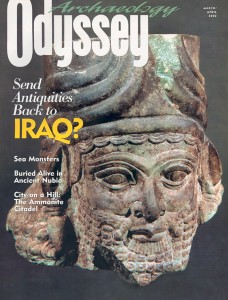A Voice of Their Own: Ammonite Inscriptions
Sidebar to: “Rabbath of the Ammonites”
Over the past several decades, numerous inscriptions in the Ammonite language have been discovered at archaeological sites in central Jordan. The Iron Age Ammonite kingdom, previously known only from the Bible and from records of its foreign conquerors, was finding its own voice.
The largest number of these inscriptions are personal seals, bearing the names and sometimes the titles of prominent Ammonites who lived from the late eighth to the early sixth century B.C.E. There are also ostraca—documents written with ink on potsherds—dating from the late seventh to the early fifth century. Finally, we have a small number of formal inscriptions, including fragments of carefully engraved stone monuments.
The earliest and most important example of this last category was found in 1961 on the Amman Citadel. Dating to the second half of the ninth century B.C.E., the Amman Citadel Inscription (below) is a fragment of a much longer inscription beautifully carved in white fine-grained limestone. Although the text is too incomplete for confident interpretation, it apparently refers to architectural structures—so perhaps it is a building inscription dedicating a temple to the Ammonite god Milcom, who is mentioned in the text.
Already a library member? Log in here.
Institution user? Log in with your IP address.

